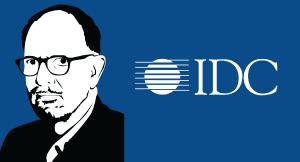Partner:
 Thank you to Avanade for underwriting CXOTALK.
Thank you to Avanade for underwriting CXOTALK.
Ask any CFO or sales executive about the value of spending millions on CRM solutions and you will probably hear plenty of skepticism, due largely to the fact that many CRM efforts over the past 25 years have failed to deliver on the lofty business goals outlined in funding requests. And now we see the majority of IT investments going to cloud, mobile, and digital "experience" solutions. Expected ROI horizons are shorter, technology refresh rates are faster, and anything that hints at a traditional application suite is derided as behind the times.
Given these realities, it's easy to question why CRM solutions are still viable in today's marketplace. But there are three major drivers that point squarely to the need, and value, of deploying CRM solutions in today's increasingly digital world.
Process and Data Still Trump Function and Features
CRM has become synonymous with the software solutions that support it—but if we examine some of the original concepts behind CRM, we realize that the premise is more valid than ever. For simplicity's sake, let's define CRM as the strategies, processes, and tools deployed by an organization to identify, engage/transact with, and retain its most valuable customers. Most executives would agree that these objectives are still core to business, and while many newer technologies boast compelling functionality and ease-of-use features, they simply do not fully address the vast array of activities and workloads that must be performed to identify, engage, and retain customers. Nor do they typically store and organize the immense data sets needed to perform these tasks in an optimal way. Therefore, organizations continue to invest in CRM technologies as part of a broader effort to remain connected to customers in an increasingly digital environment.
Customer Interaction and Commerce Channels Continue to Evolve
It's true that the "golden age" of CRM software occurred during a time when most B2C engagement took place at a retail store, contact center, or a company's Web site, and most B2B engagement happened via field sales and contact center interactions. Today, the channels for engaging with and selling to customers have expanded, with the disintermediation of the "wholesale" channel coupled with the rise of direct e-commerce, mobile platforms, third-party commerce facilitators, and social media–enabled commerce options. Each means that potentially a new set of processes, data, and technology will be needed to effectively ensure a smooth, predictable customer experience that is consistent across channels. Many newer technologies (e.g. an e-commerce Web site or mobile application) optimize portions of this mix but do not effectively manage the full set of customer interactions and supporting data in a way that meets these objectives.
The Rise of Social
Beyond their potential as a sales/commerce channel, social media sites provide a forum for customers and prospects to post or read about others’ experience with an organization, representing a critical avenue of influence that must be monitored and managed. Many proven technologies for social listening and analytics are already available, and several have been acquired or developed by CRM solution providers. The goal is to incorporate this social feedback into the overall fabric of customer interactions, making it part of the full range of customer data available and applying segment-relevant analytics to determine and execute the appropriate responses. In this context, CRM tools provide a strong platform for enabling these interactions and managing the data—even if other technologies are providing data capture and analysis.
Building a CRM Strategy
Organizations looking to invest in CRM technologies to stay connected to today's digital customer should consider the following guidance:
- Start with business process and outcomes, then select technology. It's amazing how many CRM solutions are acquired based on vague sets of requirements, expectations that optimum processes are available "out of the box," and soft (and elusive) metrics such as a "360-degree view of the customer." There remains no effective substitute for careful analysis of the capabilities and/or process changes that will drive greater sales, greater customer retention/promotion, or lower selling/servicing costs.
- Recognize that CRM platforms are a valuable part of the solution—but not the only part. Despite claims to the contrary, CRM software platforms will rarely address all of the process and data needs for a comprehensive customer engagement capability. But many companies have learned that CRM platforms provide a strong foundation for customer interaction process orchestration and data management. The key is in understanding the strengths and limitations of the major CRM platforms and planning for the use of legacy or other new technologies to augment the CRM tool—rather than force-fitting requirements onto a platform that is not designed to support them.
- Invest in business expertise to keep customer engagement initiatives on track. Even with the best of intentions, along with carefully crafted business requirements and expected outcomes, many organizations still fail to realize customer engagement benefits because such programs quickly devolve into IT-only initiatives. Having a knowledgeable, credible group of business leaders actively and intimately involved in the program can help the team remain focused on requirements that provide the optimal returns—while also maintaining a sense of urgency and relevance for the initiative to prevent stalls.
Engaging customers has never been more challenging than it is in today's digital world. The companies that succeed in an ever-changing digital landscape will be those that transform all of their customer interactions into digitally empowered experiences. The right CRM strategy and tools can be a critical differentiator.
Presented By: Avanade
Sep 08, 2016




